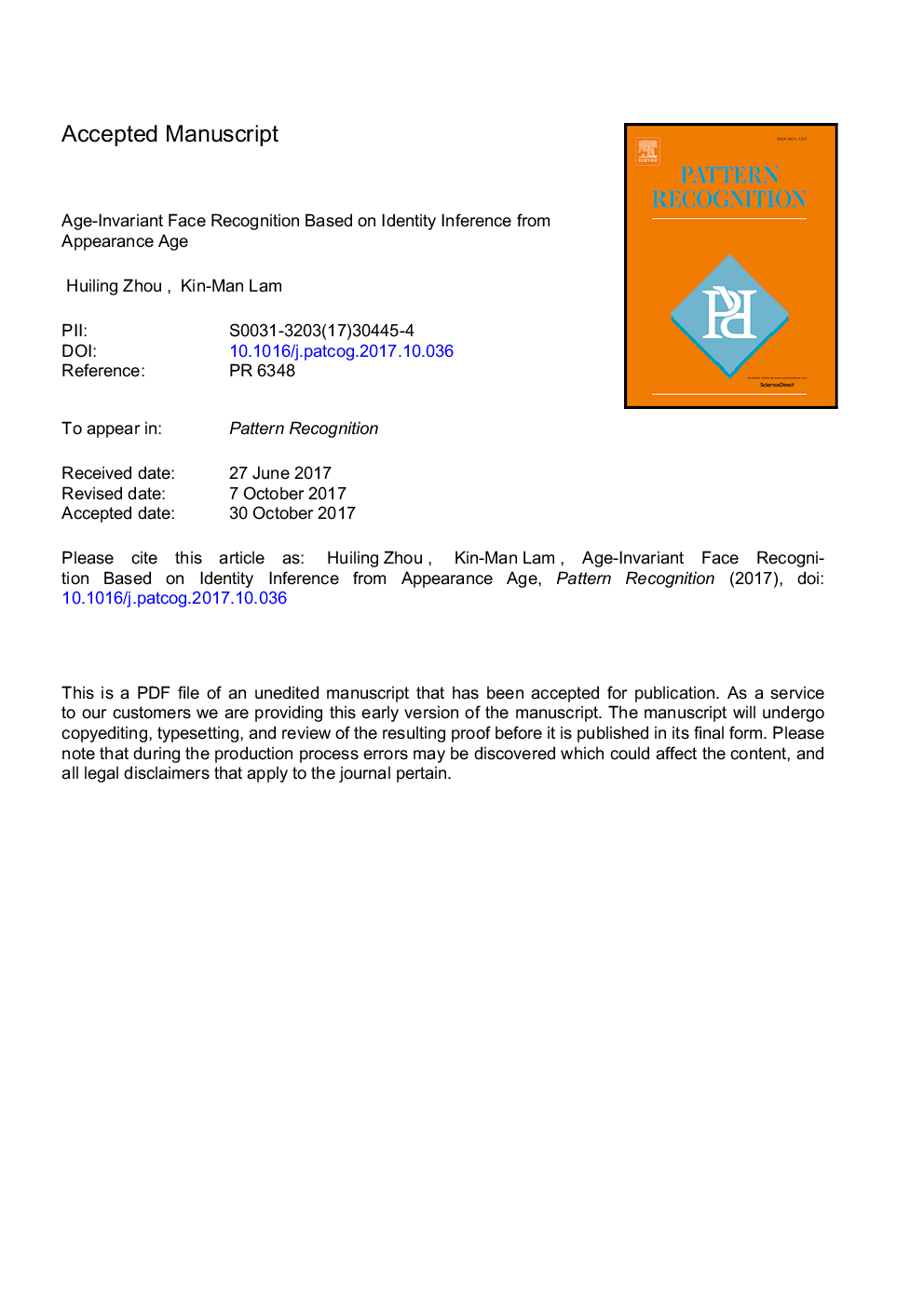| Article ID | Journal | Published Year | Pages | File Type |
|---|---|---|---|---|
| 6939403 | Pattern Recognition | 2018 | 33 Pages |
Abstract
Face recognition across age progression remains one of the area's most challenging tasks, as the aging process affects both the shape and texture of a face. One possible solution is to apply a probabilistic model to represent a face simultaneously with its identity variable, which is stable through time, and its aging variable, which changes with time. However, as the aging process varies for different people, a person may look younger or older than another person, even though their ages are the same. Consequently, using the 'real' age labels given by existing face datasets for age-invariant face recognition will inevitably introduce ambiguity to learning algorithms. In this paper, an identity-inference model, based on age-subspace learning from appearance-age labels, is proposed. We first model human identity and aging variables simultaneously using Probabilistic Linear Discriminant Analysis (PLDA). Then, the aging subspace is learnt independently with the appearance-age labels, and the identity subspace is then determined iteratively with the Expectation-Maximization (EM) algorithm. We found that the learned aging subspace is insensitive to the training face images used, and is independent of the identity model. Consequently, the recognition of aging faces becomes simpler as identity inference no longer needs to consider age labels. Furthermore, in our algorithm, different identity features learnt from the identity model are further combined using Canonical Correlation Analysis (CCA), where their correlations are maximized for face recognition. A thorough experimental analysis of face recognition is performed on three public domain face-aging datasets: FGNET, MORPH, and CACD. Experiment results show that the proposed framework can achieve a comparable, or even better, performance against other state-of-the-art methods, especially when the age range is large.
Related Topics
Physical Sciences and Engineering
Computer Science
Computer Vision and Pattern Recognition
Authors
Huiling Zhou, Kin-Man Lam,
